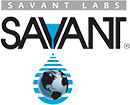ASTM D86 - Distillation of Petroleum Products and Liquid Fuels at Atmospheric Pressure
Significance and Use
5.1 The basic test method of determining the boiling range of a petroleum product by performing a simple batch distilla-tion has been in use as long as the petroleum industry has existed. It is one of the oldest test methods under the jurisdic-tion of ASTM Committee D02, dating from the time when it was still referred to as the Engler distillation. Since the test method has been in use for such an extended period, a tremendous number of historical data bases exist for estimating end-use sensitivity on products and processes.
5.2 The distillation (volatility) characteristics of hydrocar-bons have an important effect on their safety and performance, especially in the case of fuels and solvents. The boiling range gives information on the composition, the properties, and the behavior of the fuel during storage and use. Volatility is the major determinant of the tendency of a hydrocarbon mixture to produce potentially explosive vapors.
5.3 The distillation characteristics are critically important for both automotive and aviation gasolines, affecting starting, warm-up, and tendency to vapor lock at high operating temperature or at high altitude, or both. The presence of high boiling point components in these and other fuels can significantly affect the degree of formation of solid combustion deposits.
5.4 Volatility, as it affects rate of evaporation, is an important factor in the application of many solvents, particularly those used in paints.
5.5 Distillation limits are often included in petroleum product specifications, in commercial contract agreements, process refinery/control applications, and for compliance to regulatory rules.
Scope
1.1 This test method covers the atmospheric distillation of petroleum products and liquid fuels using a laboratory batch distillation unit to determine quantitatively the boiling range characteristics of such products as light and middle distillates, automotive spark-ignition engine fuels with or without oxy-genates (see Note 1), aviation gasolines, aviation turbine fuels, diesel fuels, biodiesel blends up to 30 % volume, marine fuels, special petroleum spirits, naphthas, white spirits, kerosines, and Grades 1 and 2 burner fuels.
NOTE 1—An interlaboratory study was conducted in 2008 involving 11 different laboratories submitting 15 data sets and 15 different samples of ethanol-fuel blends containing 25 % volume, 50 % volume, and 75 %volume ethanol. The results indicate that the repeatability limits of these samples are comparable or within the published repeatability of the method (with the exception of FBP of 75 % ethanol-fuel blends). On this basis, it can be concluded that Test Method D86 is applicable to ethanol-fuel blends such as Ed75 and Ed85 (Specification D5798) or other ethanol-fuel blends with greater than 10 % volume ethanol. See ASTM RR:D02-1694 for supporting data.
1.2 The test method is designed for the analysis of distillate fuels; it is not applicable to products containing appreciable quantities of residual material.
1.3 This test method covers both manual and automated instruments.
1.4 Unless otherwise noted, the values stated in SI units are to be regarded as the standard. The values given in parentheses are provided for information only.
Extracted, with permission, from ASTM D86-20b - Distillation of Petroleum Products and Liquid Fuels at Atmospheric Pressure, copyright ASTM International, 100 Barr Harbor Drive, West Conshohocken, PA 19428. A copy of the complete standard may be purchased from ASTM International, astm.org
